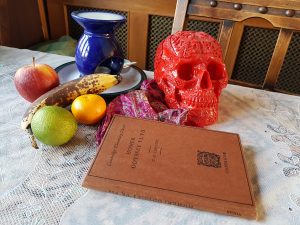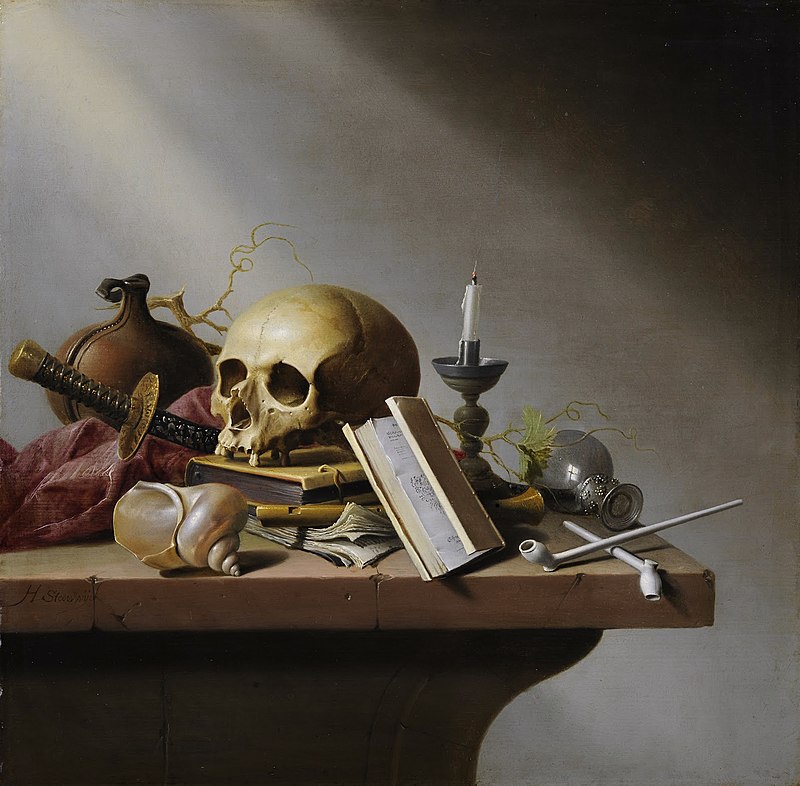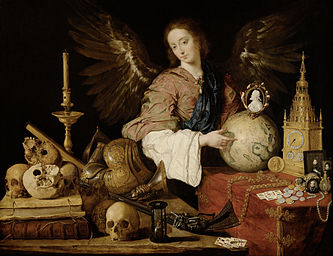- Steenwyck
- Pereda y Selgado
Still lifes included ‘Vanitas’ paintings as well as more traditional vases of flowers, arrangements of selected objects. Vanitas paintings take inanimate objects that have hidden significance and meaning. Commonly with moral and religious themes, different objects have different meanings. Often symbols of brevity of life, transience of wealth, death, piety and moral behaviour.
Tate gallery: ‘A still life artwork which includes various symbolic objects designed to remind the viewer of their mortality and of the worthlessness of worldly goods and pleasures’.
Vanitas comes from Ecclesiastes ‘The term originally comes from the opening lines of the Book of Ecclesiastes in the Bible: Vanitas vanitatum omnia vanitas ‘Vanity of vanities, saith the Preacher, vanity of vanities, all is vanity.’
‘Vanitas paintings were popular in countries with strict Protestant and Catholic Christian principles such as Holland and Spain. They were purchased by the rich who possessed a conscience about the wealth they had accumulated. However the genre had an in-built contradiction in the irony that the paintings were also valuable and collectible commodities and, as such, became ‘Vanitas’ objects themselves.’ (artyfactory)
My versions of the Vanitas theme using traditional symbology: The skull for death, candle for shortness of life, old fruit for decay and brevity of existence, book for knowledge, silk fabric for luxury and trappings of wealth.

Modern version of Vanitas using 21st century objects: Chocolate for luxury, CD for earthly pleasures of music, fiction novel for knowledge, skipping rope and medication for health and wellbeing/shortness of life, phone for communication and trappings of wealth.

Sources:
http://www.tate.org.uk/art/art-terms/v/vanitas
http://www.artyfactory.com/art_appreciation/still_life/harmen_steenwyck.htm
https://www.britannica.com/art/vanitas-art
https://www.nationalgallery.org.uk/search?q=vanitas

